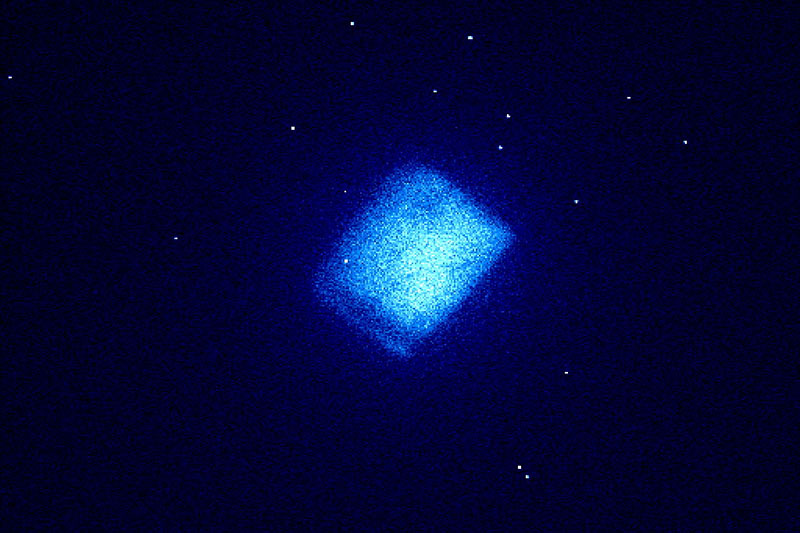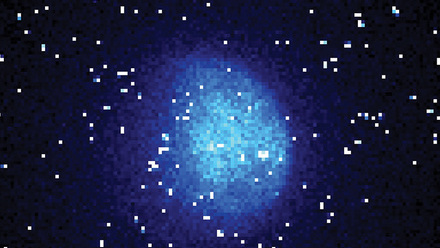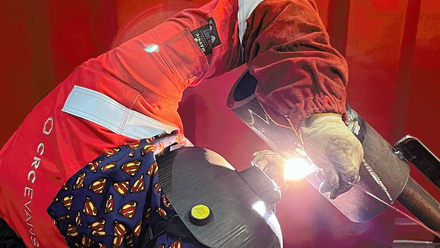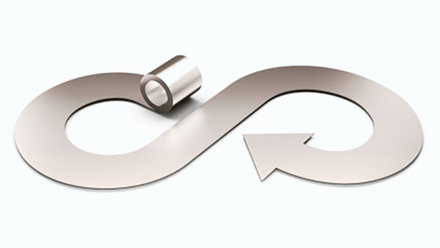First carbon-14 diamond battery
This new battery type could power devices for thousands of years, says the team from the UKAEA and University of Bristol, UK.

Weak radio luminescence, captured by a low light intensity camera, from a synthetic diamond carbon film made from beta-emitting carbon-14 atoms
The partnership from the UK Atomic Energy Authority (UKAEA) and the University of Bristol leverages the radioactive isotope, carbon-14, known for its use in radiocarbon dating, to produce a diamond battery.
Using the radioactive decay of the isotope, which has a half-life of 5,700 years, to generate low levels of power, the battery functions similarly to solar panels.
Instead of converting light particles (photons) to electricity, it captures fast-moving electrons from within the diamond structure.
The team say the bio-compatible diamond batteries can be used in medical devices like ocular implants, hearing aids and pacemakers, minimising the need for replacements and distress to patients.
Diamond batteries are also usable in extreme environments - including space - where it is not practical to replace batteries.
They could power active radio frequency tags where a device needs to be identified and tracked, such as a spacecraft or payloads, for decades.
'Diamond batteries offer a safe, sustainable way to provide continuous microwatt levels of power. They are an emerging technology that use a manufactured diamond to safely encase small amounts of carbon-14,' says Sarah Clark, Director of Tritium Fuel Cycle at UKAEA.
A team of scientists and engineers from both organisations worked together to build a plasma deposition rig, a specialised apparatus used for growing the diamond at UKAEA’s Culham Campus.
This development is the result, in part, of UKAEA’s work on fusion energy.
For further technological discussion see the updates item below.








